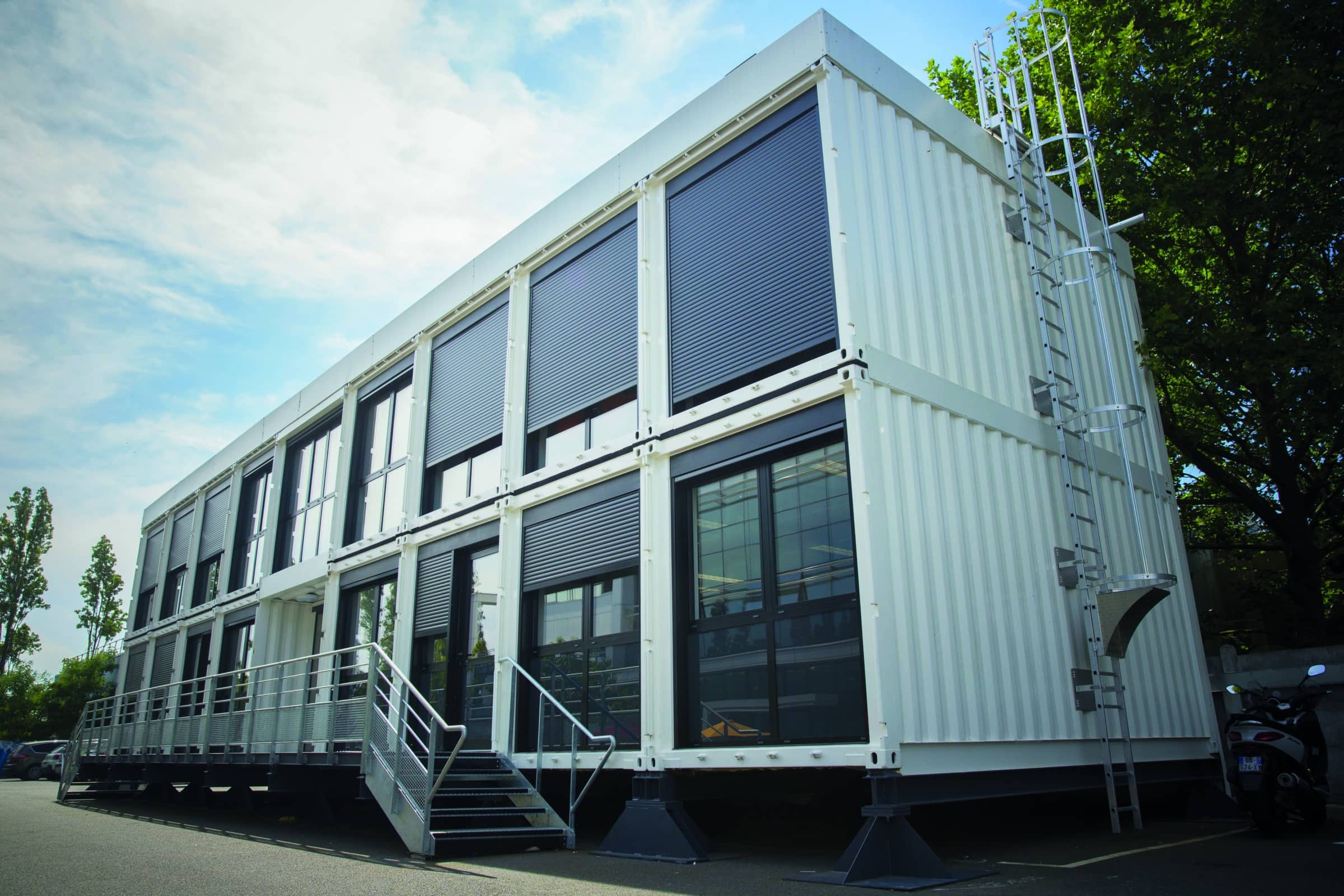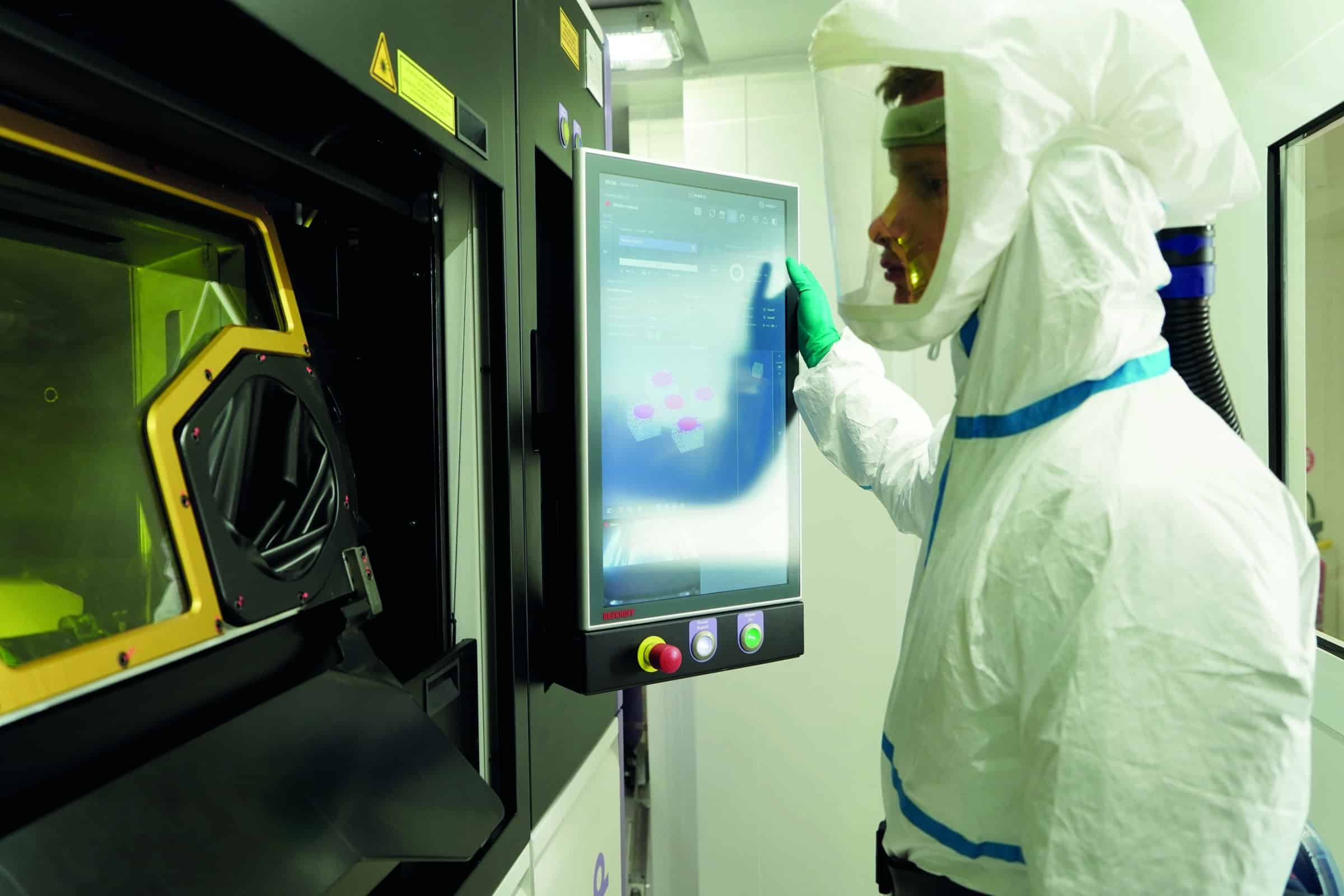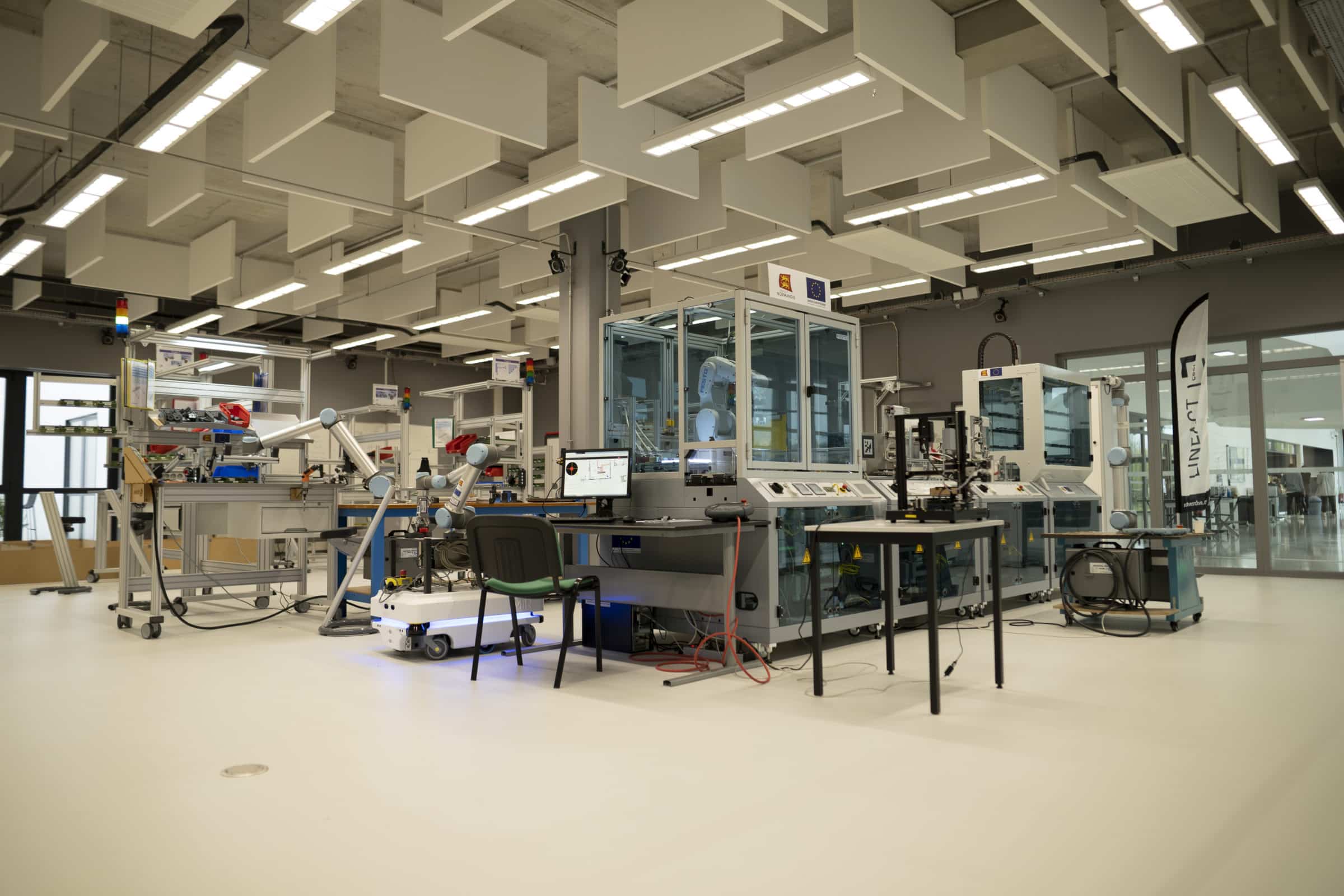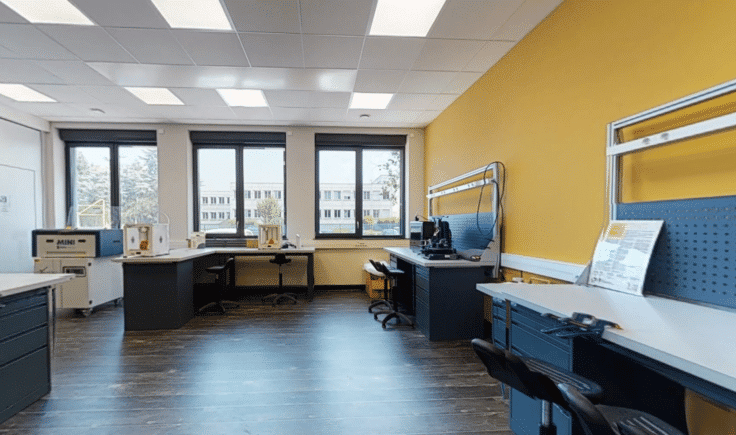CESI demonstrators
Innovative technological and educational space.
The Smart Building Demonstrator

Research and experimentation platform
In 2017, the CESI campus in Nanterre was equipped with a “Smart Building” demonstrator dedicated to connected and intelligent building concepts. Research and experimentation platform and place of learning and training, this building underlines CESI’s strong position in favour of a more intelligent and sustainable city.
At a time of digital revolution, construction professionals are increasingly relying on new technologies to improve the energy performance of buildings, increase user comfort and propose solutions for a more energy-efficient city.
Innovative in many ways, this 220 m² modular intelligent building is a showcase for CESI LINEACT’s Research and Innovation activities in the field of Smart Building and related themes, such as predictive maintenance and building information modelling (BIM). The design of the building is the result of a close partnership between CESI, CEFIPA and several industrial companies in the sector: Cisco, Signify, Vinci Energies and its subsidiary Axians, and lastly CAPSA for the structural part.
The architecture of the building has several outstanding features. The “Smart Building” is made up of 16 maritime containers spread over two levels and features numerous structural innovations. The second level of containers is placed directly on top of the first, without any intermediate metal structure. Furthermore, the building is based on a system of intelligent foundations which sink less than 20 cm into the ground. This technical choice has considerably reduced the construction constraints and limited the duration of the worksite to five months.
Based on the data supplied by the sensors it contains (temperature, humidity, detection of opening, presence and luminosity, detection of user action on adjustable systems, etc.), this intelligent building is likely to adapt its behaviour to enhance its energy performance and the comfort of its users.
Each element of the “Smart Building” is linked to its own IP address. Thus, each window and each lamp can be remotely controlled by a centralised server. Depending on the data generated by the sensors, the temperature of a room can be adjusted, the ventilation system controlled and the intensity of the lights reduced, all remotely and in real time. A weather station, installed directly on the roof, rounds off the system.
CESI LINEACT‘s research teams and their industrial partners are at the leading edge of the issues related to the building of the future and are developing research work within the demonstrator. Since its creation, the building has hosted several programmes with an international dimension, including DEFI&Co, designed to develop the training offer in the field of the building of the future, and the LaVI&Co programme on the development of digital twins.
As part of this programme, a digital duplicate of the demonstrator was created for educational purposes. Based on the concept of digital twins, this model helps learners based on the same campus or in different sites to interact with a dynamic representation of the platform. A valuable educational tool in terms of data analysis, digital simulation and building operation and maintenance.
The Smart Building Demonstrator is a great place for experimentation and is naturally an excellent teaching medium for CESI students. The demonstrator is used in a wide range of courses related to energy performance, BIM, connected objects, data management and analysis, artificial intelligence and the implementation of predictive maintenance models.
The mobile metal additive manufacturing unit

An innovative concept
Additive manufacturing, or 3D printing, is one of the key technologies of the industry of the future. In just a few years, it has become widely used in many industrial sectors such as medical, space, automotive, aeronautics and many others.
Additive manufacturing refers to a set of processes used to manufacture a component by overlapping successive layers of material, based on a virtually sliced digital model (CAD). The most promising metal additive manufacturing processes are based on laser fusion of metal powders. This technology is particularly suitable for single parts or small series, at an affordable cost. It offers amazing design flexibility and can create highly customised, complex components with high added value. In industry, the emergence of additive manufacturingis driving a significant paradigm shift.
In just a few years, this technology has become widely used in many industrial sectors such as medical, space, automotive, aeronautics and many others. Today, a growing number of companies are seeking to position themselves in additive manufacturing.
Aware of the challenges of these new manufacturing processes for industry, CESI is optimising the skills of its students by fully integrating this technology of the future into its training offer: in particular the “Metal Additive Manufacturing” option offered from the engineering cycle onwards. To provide the best possible training for its students, the school has acquired its own metal additive manufacturing unit, located on the Nanterre campus.
This choice confirms the desire to develop work related to the themes of the factory of the future and the intelligent and sustainable city. This factory, made up of maritime containers, is entirely modular, dismountable and transportable, and houses the printer in a clean room type environment.
Metal additive manufacturing involves significant risks related to the use of lasers and especially metal powder: risk of ignition, health risk by inhalation or ingestion of particles for example. To mitigate these risks, the CESI LINEACT research teams have worked on the creation of a unique concept of a mobile factory with a controlled atmosphere.
Always attentive to technological developments, CESI regularly adapts its training offer to integrate new skills and anticipate changes in the job market.
Since 2019, a new option “Metallic Additive Manufacturing” is offered in its engineering cycle. This option consists of six modules of expertise and trains future engineers to apply this technique to the industry of the future. This option consists of six modules of expertise and trains future engineers to apply this technique to the industry of the future.
To date, CESI is one of very few French establishments to offer a comprehensive training programme in metal additive manufacturing, with over 200 hours of training per year.
La Source – Industry of the Future Demonstrator

CESI undertakes to train engineers ready to meet the industrial and environmental challenges of tomorrow. This commitment led to the project to move the Rouen campus in 2020 to a new 10,000m² study area, located at the very heart of the Rouen Normandy Science & Engineering Campus, which already attracts many stakeholders in higher education, in research and innovation, as well as the competitive sectors and clusters, companies and start-ups. This new building, respectful of environmental standards, oriented towards the future and research, brings together technological and educational spaces, including the “Industry of the Future” demonstrator called “La Source” and composed of :
- a flexible and adaptable automated and manual production workshop consisting of an automated didactic production line, manual workstations and mobile transport robots
- a fablabin which 3D printers (wire, plastic and metal powder sintering) are installed
- a prototyping workshop
- a laboratory dedicated to the digital and augmented factory
The “Industry of the Future” demonstrator is a genuine contribution to the future. The professions related to this sector will definitely require the development and adaptation of training courses to meet the skills needs of companies, as well as the implementation of new means and tools to prepare as best as possible the engineers of tomorrow.
By providing its students with such technologies, CESI offers the best possible training and prepares its students for the professions of the future in Big Data, IT security, energy performance, production and industrial maintenance.
CESI Graduate School of Engineering is constantly investing in technology and seeks to ensure access to this technology for all its students, no matter where they study, notably through the development of digital twins. This technology is the result of research conducted by CESI’s LINEACT research and innovation laboratory, enabling La Source to be created. The technologies available in the ‘Industry of the Future’ demonstrator will be developed in line with the emerging needs of the sector.
Thus, with its “Industry of the Future” demonstrator, CESI is positioning itself alongside existing structures, on the particular topic of industrial organisation and the integration of additive manufacturing tools into production. CESI is committed not only to research, by integrating the core of the region’s structuring projects, but also to the future, by preparing its engineering students for the emerging issues and challenges of the industry of the future.
A demonstrator dedicated to the digital and energy transitions

As long-standing partner of companies in their industrial organisation and performance, CESI now supports them in their transition, both digital and energy. On its campus in Arras, CESI has built a demonstrator on this topic with a surface area of over 1,000 m2.
This technological and educational platform gathers technical platforms, a FabLab, a Créativ’Lab, cobotic stations, virtual and augmented reality workshops, co-working spaces and a Cisco laboratory. The facility is used for educational programs and training of company employees. In addition, it is also used for transfer activities to support SMEs in their innovation, industrial performance optimisation and R&D projects.